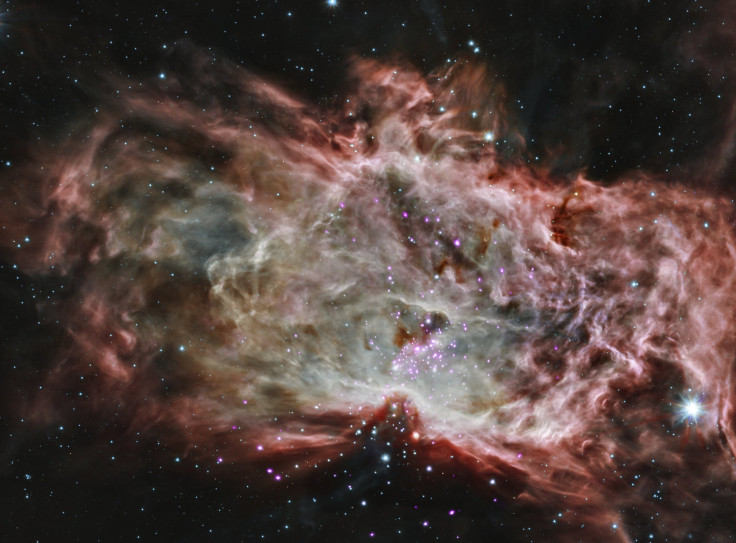NASA's Chandra Observatory Uncovers New Secrets About Star Cluster Formation

Astronomers are using NASA’s Chandra X-ray Observatory and infrared telescopes to gather information to help better understand how clusters of stars are formed.
Earlier notions of star cluster formation suggested that stars form into clusters when a giant cloud of gas and dust pulls in material from its surroundings until it becomes dense enough to trigger star formation. As the process begins in the center of the cloud, it implies that the stars in the middle of the cluster form first, and so are the oldest. But the latest study, based on data from Chandra, suggests that this concept is incorrect.
“Our findings are counterintuitive,” Konstantin Getman of Penn State University, who led the study, said in a statement. “It means we need to think harder and come up with more ideas of how stars like our sun are formed.”
Astronomers analyzed two clusters -- NGC 2024, located in the center of the Flame Nebula, and the Orion Nebula Cluster -- where sun-like stars currently are forming. The study revealed that the stars on the outskirts of the clusters actually are the oldest.
Astronomers first used Chandra data on the X-ray brightness of the stars to determine their masses. Then they determined how bright these stars were in infrared light using ground-based telescopes and data from NASA's Spitzer Space Telescope. Astronomers combined this information with theoretical models to estimate the ages of the stars throughout the two clusters.
After examining the data, astronomers found that the stars at the center of NGC 2024 were about 200,000 years old while those on the outskirts were about 1.5 million years in age. In the Orion Nebula, star ages ranged from 1.2 million years in the middle of the cluster to almost 2 million years near the edges.
Based on the new findings, astronomers have come up with a set of notions, one of which suggests that stars continue to form in the inner regions because the gas in the inner regions of a star-forming cloud is denser than in the more diffuse outer regions. But, if the density falls below a threshold over time where it can no longer collapse to form stars, star formation stops in the outer regions while the same will continue in the inner regions.
“The next steps will be to see if we find this same age range in other young clusters,” said Michael Kuhn, a Penn State graduate student who also worked on the study.
© Copyright IBTimes 2024. All rights reserved.






















